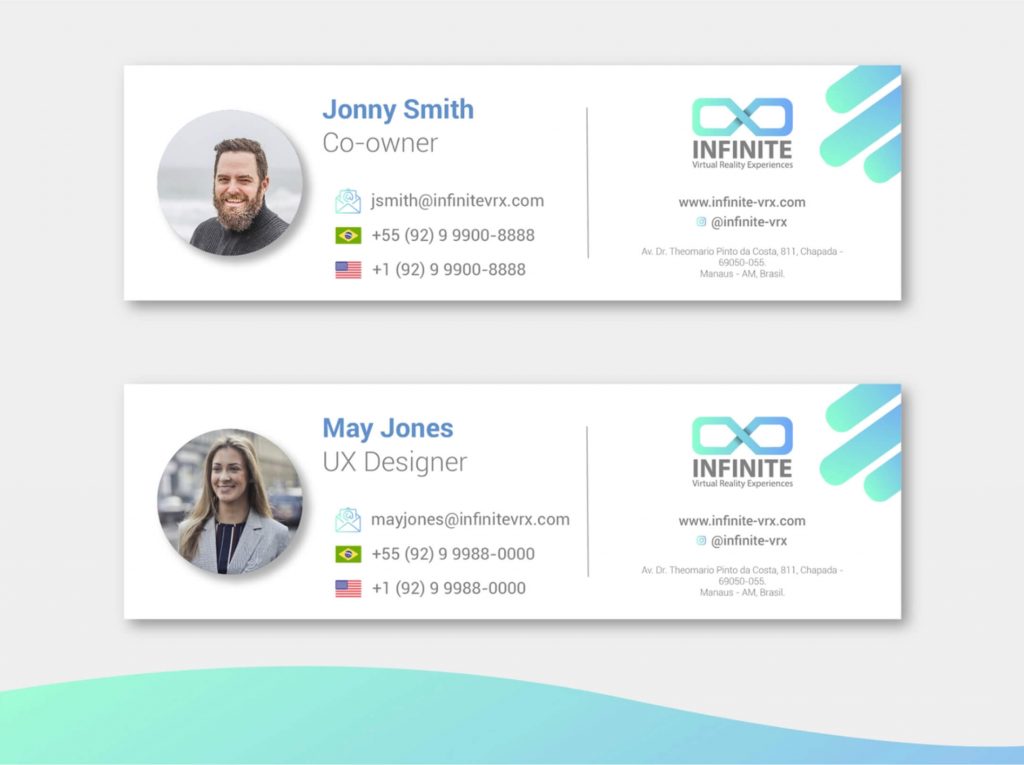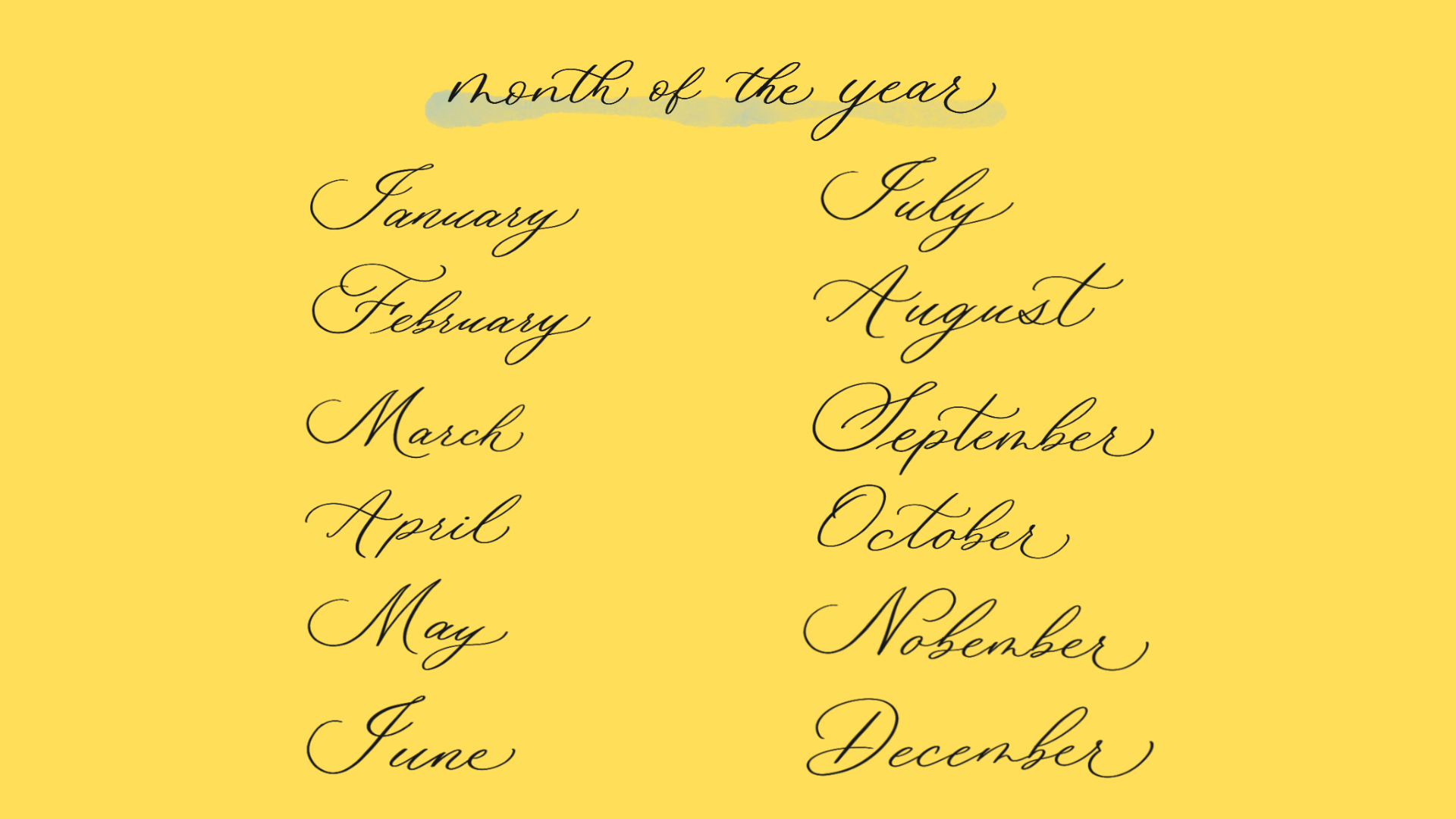Everyone wishes to make a good first impression. Also, you must leave a lasting impression that imprints the brand in the memory of the customer. This is always a top marketing concern. This lasting impression increases brand awareness, develops strong relationships, secures return customers, and attracts new ones. It is the key factor behind your company’s success. An email signature offers that everlasting impression. Finishing an email newsletter establishes a connection between the brand and general perception, ensuring that users do not mix your business with anything else. It solidifies an overall effect. When done correctly, it can achieve a variety of marketing goals.
Let’s go a little deeper into email signature design, evaluate best practices, stock the toolbox with useful tools, and draw inspiration from real-life examples to discover how to close every engagement in a professional tone while driving extra traffic to your website.
What is an Email Signature?
A signature is a tiny block of text that adds details to emails such as your name, company position, and contact information. In marketing, an email signature is a way of personally saying goodbye that appears at the bottom of every sent email. An email signature can boost response rates, improve website traffic, and even enhance cash flow.
Goals of Email Signature Design
When the email signature design is professional and visually appealing, it can serve as a solid basis for marketing techniques. You can, for example, show an additional offer to those who read to the end of the email, share a link to useful elements on your official website, or promote a sale. In addition to promoting the brand, an email signature can help you achieve the following objectives:
- Market the brand
- Build respect for the brand
- Increase trust in the firm
- Encourage reader response
- Increase engagement
- Drive traffic
- Generate leads
Best Practices for Creating an Effective Email Signature
The email signature is a brief block at the bottom of the digital newsletter. It may not have a lot of room, but it doesn’t mean it has to be abrupt and boring. On the contrary, it should be memorable, spectacular, and, most importantly, beneficial to your company’s image. It seems that developing an eye-catching email signature design is not difficult. After all, it’s just a simple text block. What could possibly go wrong? However, you don’t have a lot of room to display everything. According to studies, a branded signature attracts more attention than a non-branded one, suggesting that you must also use some design expertise.
Follow these best practices to nail an email signature design and develop one that rapidly reaches its audience. The first step is to design a basic format. Typically, the foundation includes the following items:
- Your first and last name
- Job title or position in a company
- Company and connection to the company
- Phone number
After you have your solid foundation prepped, it is time to build on it.

Informative Elements
You have other options outside of just giving your name, employer, and phone number. Add more information to the educational section to make it more thorough if you want to boost brand credibility and website traffic.
- Include links to LinkedIn, Twitter, Facebook, and Instagram profiles. Alternative methods of direct contact help in connecting with new clients, bridging the gap between the business and individuals, building brand trust, and retaining consumer trust. Simple circle icons will suffice. Avoid linking to irrelevant or rarely used social accounts.
- Incorporate a call to action. The CTA can attract people to follow you on social media, purchase a promoted product, read the latest news on your blog, or earn bonus points for a rewards program.
- You may include a reference if you need to say something useful, promote a certain service or product, share company accomplishments, or make vital announcements. Don’t be too wordy or forceful. One link will be enough.
- If you send content that is helpful for the person receiving you can profit from good segmentation and customization here.
- Include legal disclaimers or requirements in line with CAN-SPAM rules, such as an unsubscribe option.
- Use creative closings to satisfy audience expectations. Although typical remarks are effective, one that oozes your charisma makes the person eager to respond to you.
- Finish with gratitude and thanks. According to research, an email signature that ends with a thank you letter is more likely to receive a response. Use words like “thank you,” “thank you in advance,” or “thanks.”
Add one of the following to your email signature to strengthen your marketing campaign:
- A link to your most recent content
- A link to your blog subscription
- A link to a promo page
- A link to customer reviews
- A banner with the most recent deal
- Seasonal promotions
- Holiday greetings
Visual Elements
Even though the email signature occupies only a short space at the bottom, there is an opportunity for images. Beautiful images and graphics are welcome since they improve the user experience, draw attention to important content, and serve as indications for scanners and skimmers. Consider some helpful suggestions about what you can do.
- Add your face. People recall pictures better than text, and your pleasant mood will be imprinted on the customer’s mind. Make it bright and sparkling since color visuals and strong emotions are more recalled, according to psychologists. Make use of a portrait. It will show trust, provide a pleasant feeling, personify the message, and forge a deep bond with the viewers.
- If you don’t want to include a headshot, use a logo. Although a personal touch is preferred, if you do not want to share your image, a company’s logo is a viable alternative. As a brand identity, it is beneficial to remain neutral and represent the entire team rather than one individual. As a result, it is frequently utilized by businesses in digital newsletters.
- Employ animated gifs. An animated gif can be useful for adding action and emotion to your email signature design. Experiment with different facial expressions or make it all about the company.
- Be mindful when using emojis. Emojis are excellent tools for conveying emotions, reinforcing messages, and brightening the mood. However, an email signature is a component of a company’s brand identification. Emojis may be appropriate if you maintain a cheerful tone and too friendly conversation with your target market. However, if you want to project the image of a serious organization positively, they can be regarded as not-so-good manners. So, only use emojis if they are consistent with your overall brand and precisely resonate with your target audience.
- Avoid using videos. Although videos are more powerful than photographs, keep in mind that they are frequently not supported by email readers. You run the danger of being disappointed and confused, which could derail your efforts.
Design Elements
When you’ve settled on the content, put all your content together. Follow this general guideline for establishing a user-friendly email signature design.
Size
Let’s start by determining the ideal size for an email signature. Size counts in an email newsletter, especially one prepared using HTML and CSS. Even if the email signature is at the bottom and takes up a small amount of space, it has an impact on overall performance and user experience. It might also add weight to the newsletter, making it heavier. As we all know, the heavier the email, the more likely spam filters will catch it. We cannot allow it to happen.
As a rule of thumb, an email signature should be 300-600 px in width and 150-200 px high. Make sure your photos are optimized. Alternatively, you can use hosted or linked photos to substantially minimize the size of the email signature design. However, make sure your recipient does not block it so that he or she sees the actual image rather than a box with a red “X.”
Structure
It should be well-balanced and simply scannable within seconds. Everything should be well-organized while remaining tasteful. Use formatting to complete this task successfully.
Follow these pointers:
- Use font and color to categorize content;
- Use a bullet list;
- Use dividers to separate logical elements of the signature;
- Provide contrast for the block to differentiate the signature from the full reading flow.
- Use colors that pop each other, such as yellow and blue;
- Unify social media icons in size, color, style, and shape;
- Avoid too many tiny graphical details;
- Avoid long words;
- Avoid huge banners or overwhelming offers.
Finally, use a two or three-column design that efficiently handles the text. For example, in the left column, you could put an image or company logotype, and in the right column, you could provide contact information. If you don’t want to divide your email signature into two parts, start with an image and then provide your contact information.
Typography
Typography should be carefully chosen in such a little block as an email signature. Keep these three important considerations in mind.
- Avoid using multiple typefaces in the same signature block. Stick to one and experiment with weight, style, and size.
- Use safe typefaces, which are supported by the majority of email clients, devices, platforms, and operating systems.
- Use legible letterform typefaces. Arial, Verdana, Helvetica, and other non-serif fonts perform nicely here.
Email Signature Examples

Caviar’s email signature is short, simple, and to the point. It occupies only a short area on the bottom and is similar of signatures seen in personal communication. Only the LinkedIn logotype, job title, and social networking icon reveal the site’s business orientation. Take note of how Alex Banaga expertly transformed a simple sign into a piece of brand identification. Even if it is becoming increasingly tiny and compact, it has professional air.

This is another of our basic email signature designs. It, too, shows only vital information – no marketing tactics, banners, animated gifs, or embellishments. Everything is clean, sleek, and simple. Nonetheless, it does not appear overly simplistic. It looks great. It appears professional due to the image with a brand touch, well-organized contact information, a link to the website, and a compact size. However, because of the personal touch, it also seems welcoming.

Do you require something greater and more powerful while remaining appropriate for personal contact and digital newsletters? Take a cue from Tai Valois. It’s similar to a great old-fashioned business card that we use in real life with a strong appeal. The email signature includes an avatar, first and last name, job title, contact information, logotype, and even the physical address of the organization. Normally, the logotype is on the left, but here it is on the right to highlight the company’s contact information. It has a clean, sleek, attractive, and modern design. The background echoes the logo, strengthening the brand’s identification. A large headshot conveys positivity, making the newsletter appear approachable.
With the use of smart marketing, email signature in email marketing can produce leads. This hexagonal-themed sample illustrates the point. It not only provides contact information but also encourages interaction and tickles curiosity with a stunning banner that highlights an incredible discount. It’s worth noting that the banner is quite large. It’s a risky but bold move. It complements the rest of the design. In terms of structure, the team employed a three-column style that provides for the effective handling of large amounts of data. As a result, the left column is dedicated completely to the logotype, the center column to the bio and contacts, and the right column to the social media icons. Everything is neatly arranged.
This contemporary, all-inclusive email signature design expertly incorporates all important information. It smartly arranges basics in a rigid two-column structure. Furthermore, it leverages icons to provide meaning to each piece of data and offers scanners with appropriate visual clues. The main element of this sample is a banner that invites people to a free webinar subtly and effectively. Despite being at the bottom, it draws attention due to its vivid on-brand appearance and forceful words. Overall, the email signature is fantastic. The main problem is the choice of orange for tiny icons, which appear unreadable on the white background.






